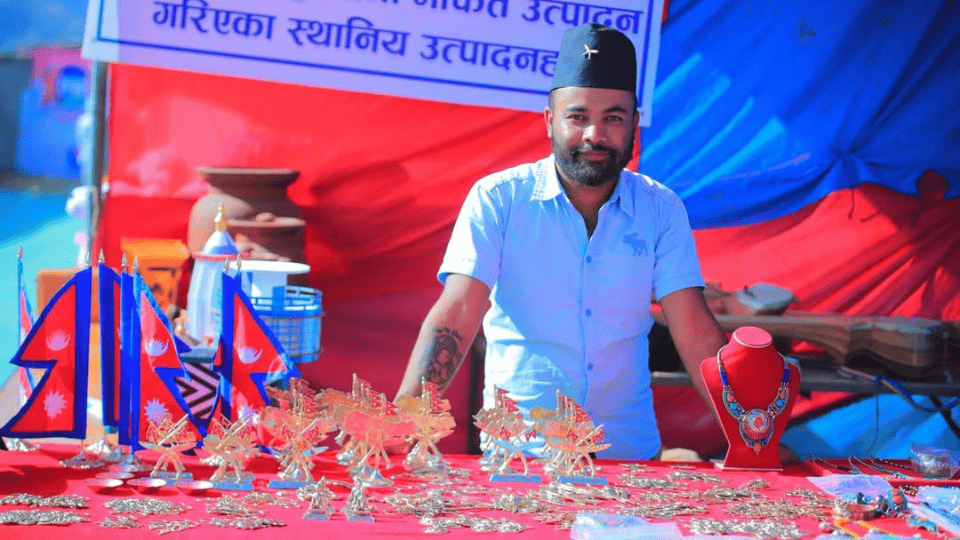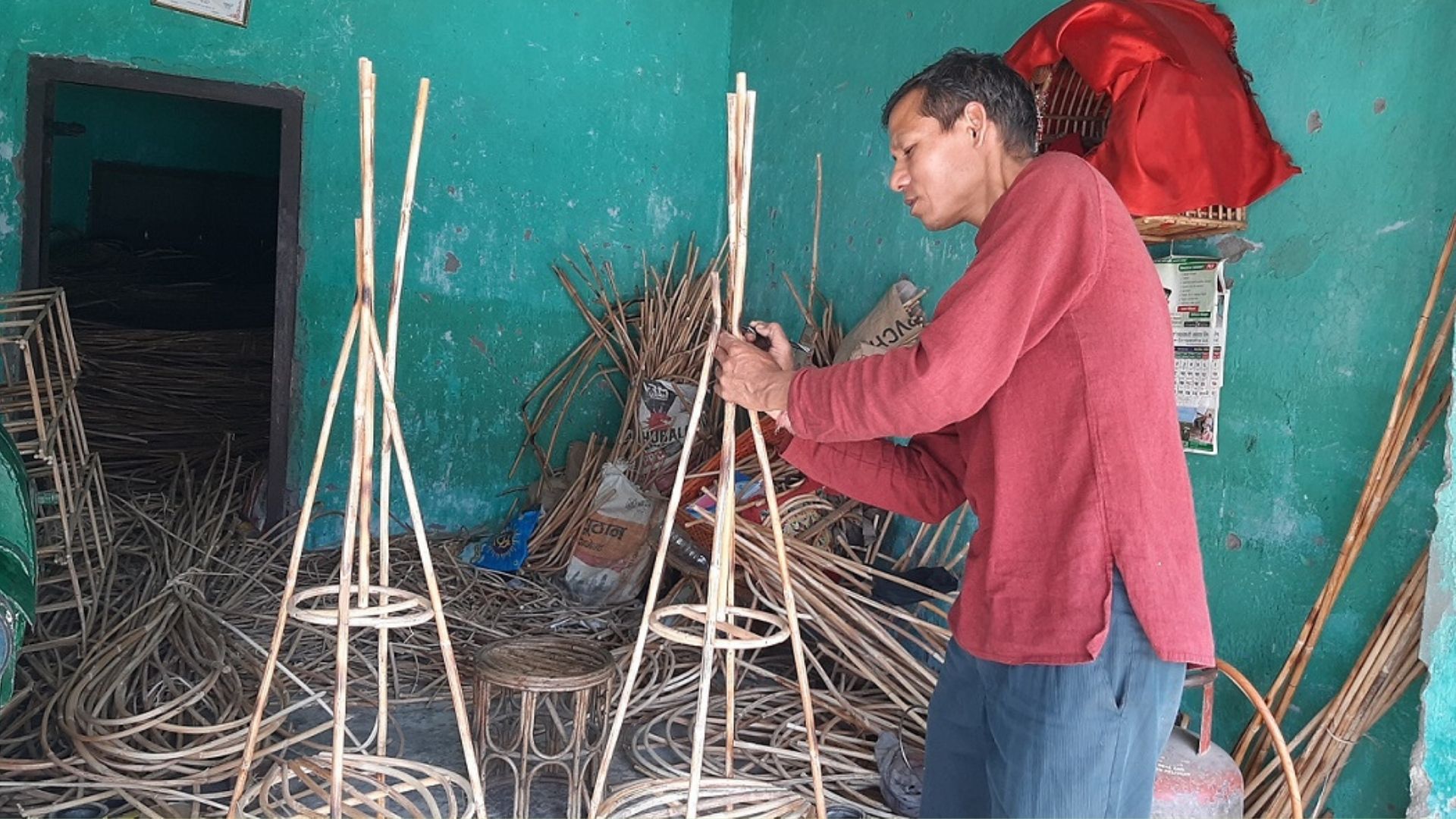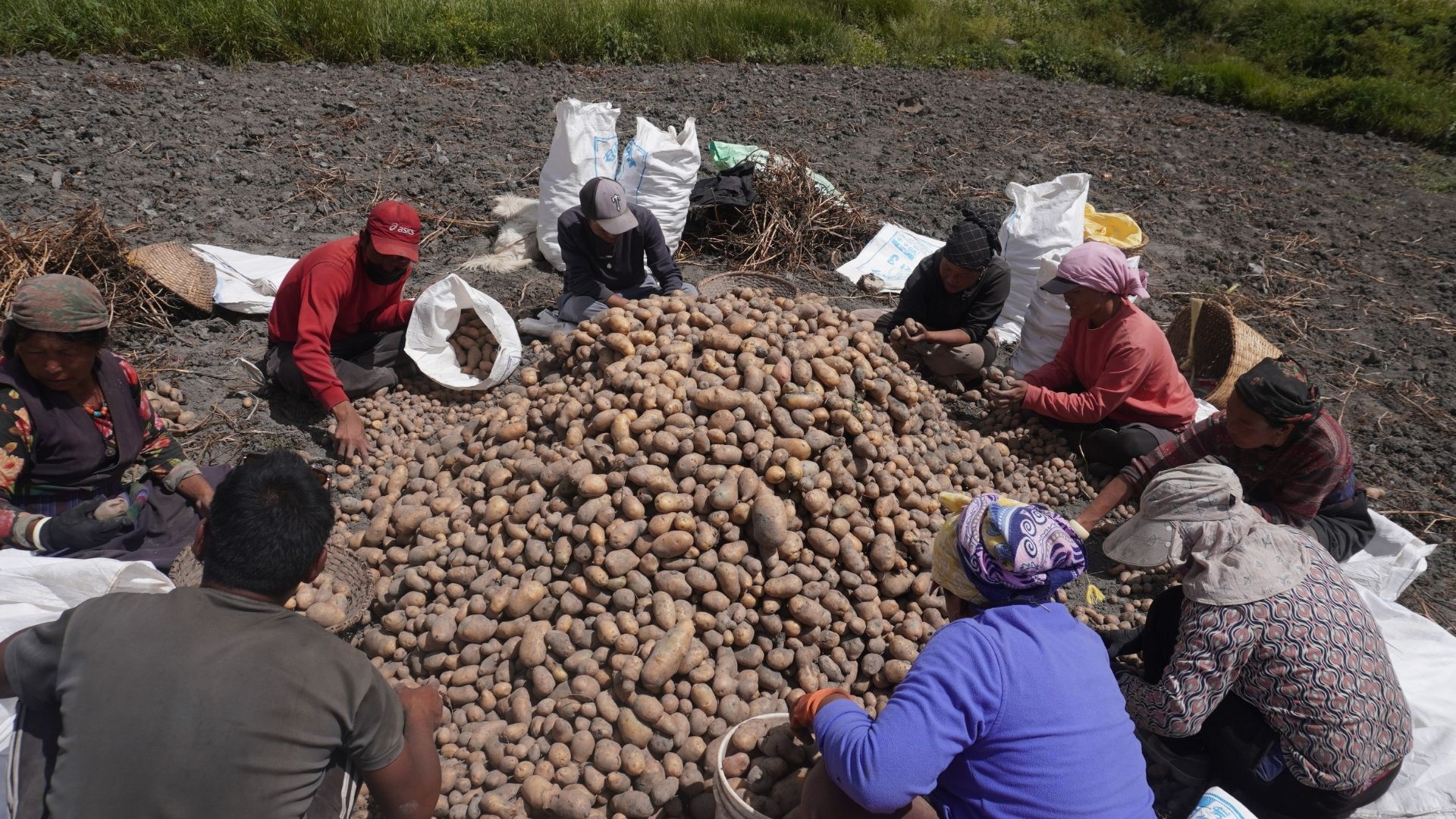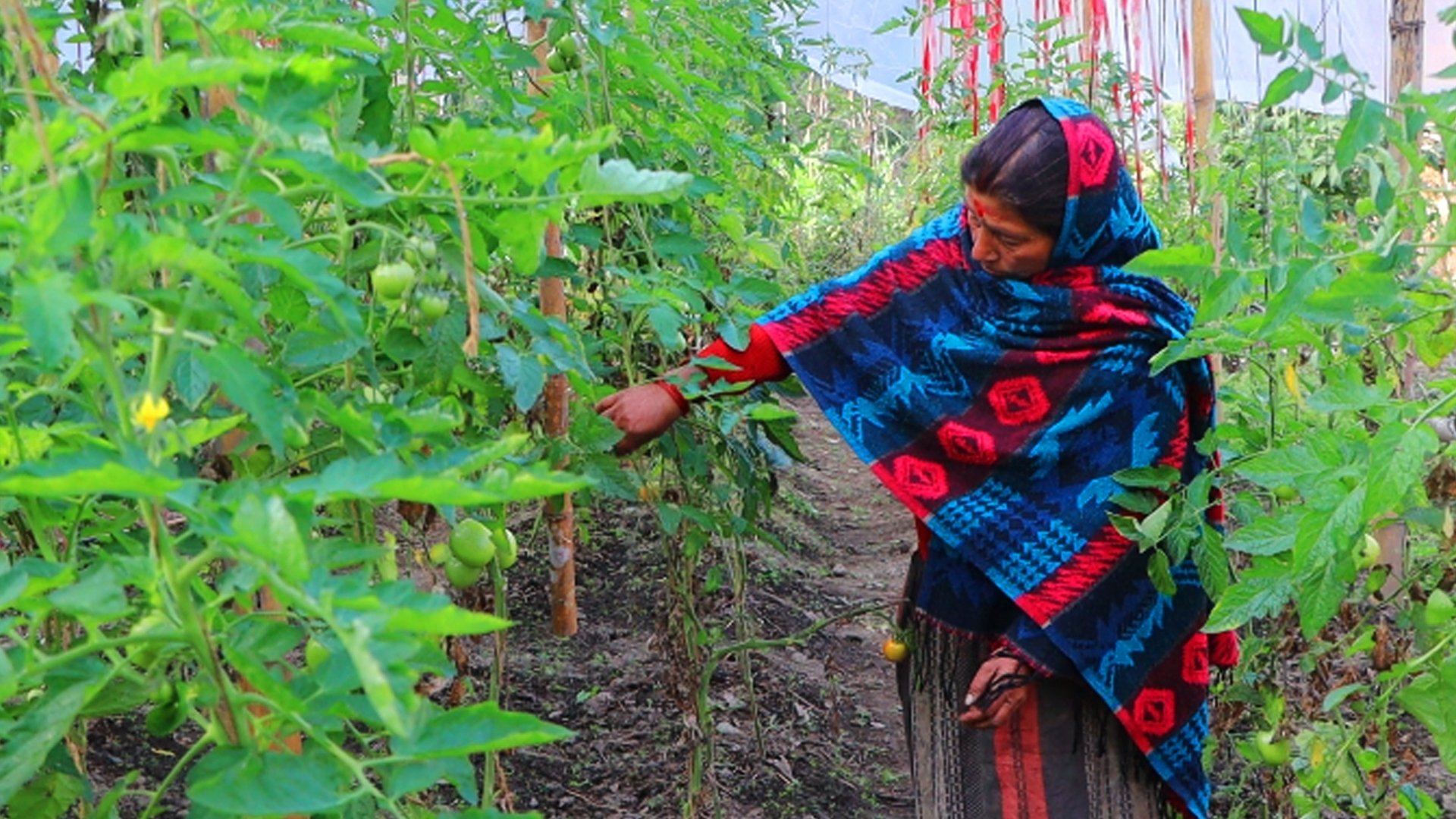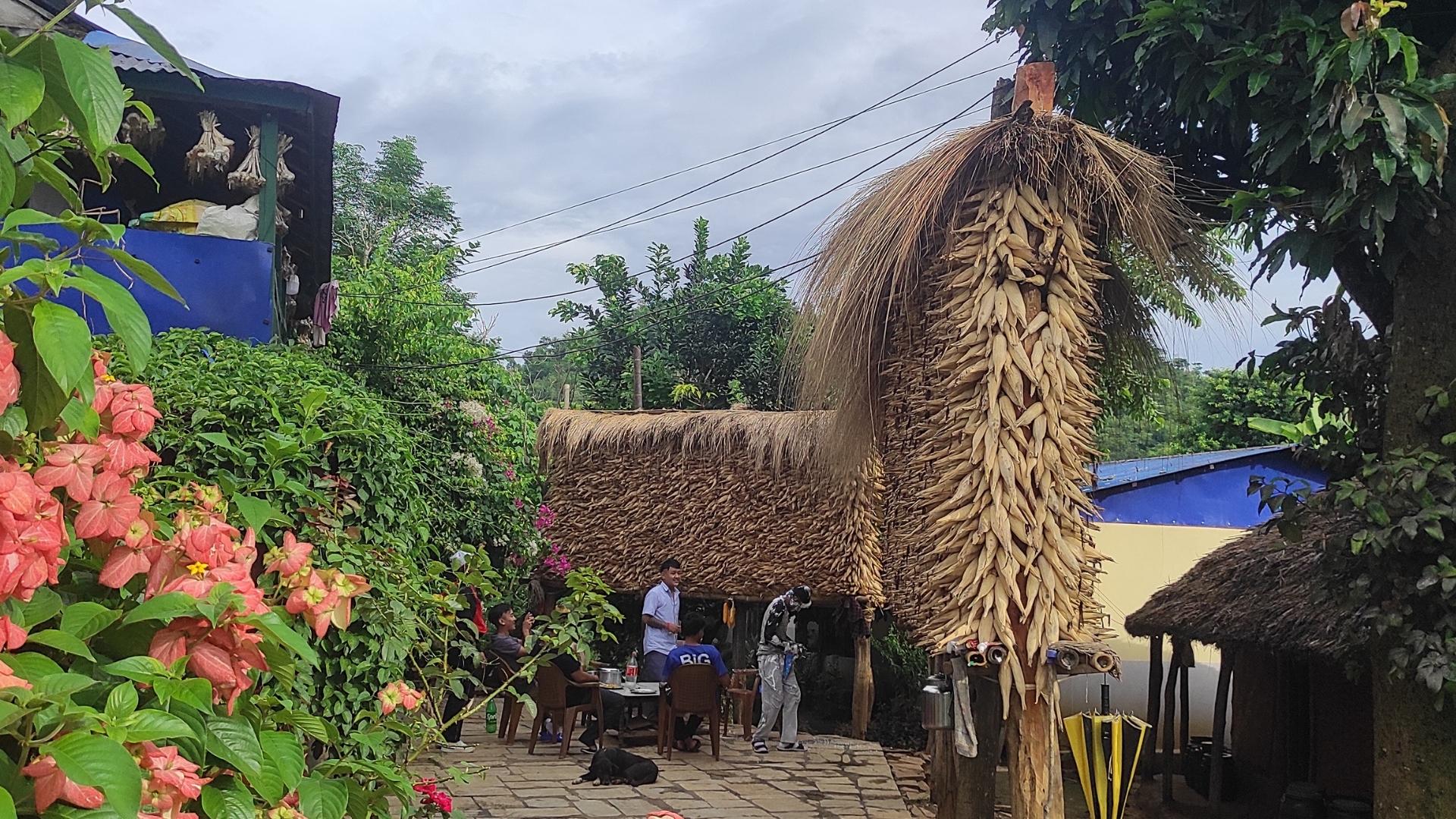Rita Tamang and a few other local women gained basic knowledge about beekeeping by utilizing the opportunity of the women’s self-reliance training program. Held in Poush 2081 B.S., the seven-day-long training was organized by Urlabari Municipality Ward No. 7 and attended by 35 women from various neighborhoods of the municipality. The training was conducted by experienced beekeeper and professional trainer Bodhraj Khatiwoda.
This training not only provided the participants with knowledge about beekeeping but also inspired them to start a business and opened a path toward a professional direction.
After the training, 11 women among the participants made a commitment and planned to start the business. Rita’s group actively began beekeeping work from the month of Magh.
Support from the local government and women’s determination
In the initial stage, the municipality provided support amounting to NRs 60,000 along with rupees 50,000 from the ward office. The sum was used in purchasing 10 beehives (each with five frames) to begin the beekeeping.
According to Rita, it was easier to start the business due to the minimal personal investment required. She states that the continuous training, monitoring, and technical assistance from the local government also added to their confidence.
“The continued facilitation by the local government gave us more confidence in beekeeping,” shares Rita. She also participated in a seven-day advanced training recently organized by the provincial government. “The earlier training was more theoretical, whereas the advanced training focused on practical aspects. I learned many new things about how bees behave, disease control, and hive management,” she shares.
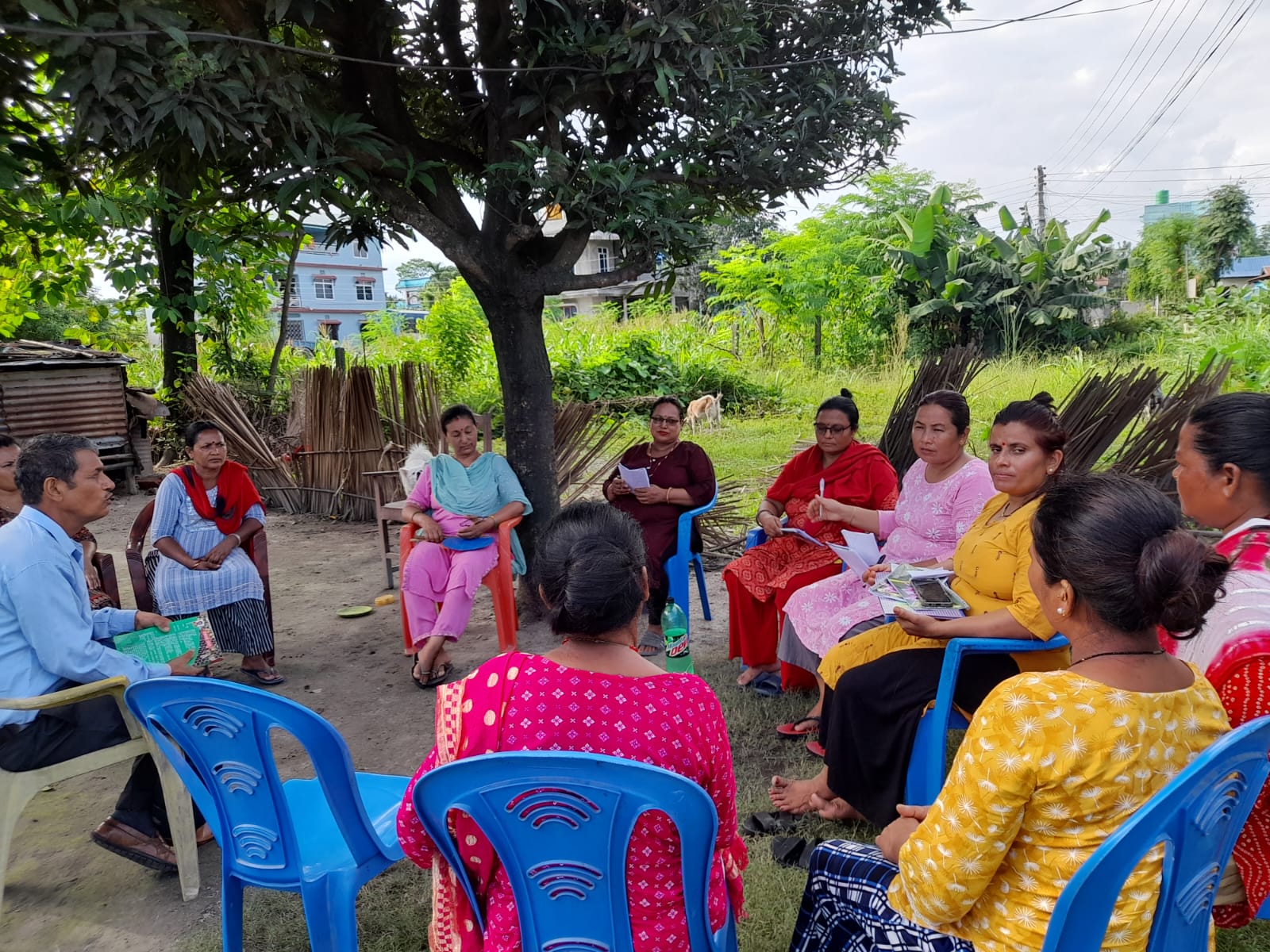
In the beginning, without having taken the advanced training, there were challenges such as bee stings and lack of knowledge about hive management. However, by staying in regular contact with the trainer and through his dedicated support, advice, and personal presence, those problems were resolved more easily. Rita explains that they moved forward by facing challenges, seeking solutions, and gaining experience.
Currently, the bees have expanded on their own to 30 hives with ‘super’ frames. This entire expansion was made possible through reinvestment of the income generated from the bees. Additionally, the business, which began with five frames per hive, now has 10 frames per hive. Alongside business growth, some women have also started earning enough to manage household expenses.
What is the Beekeeping process like?
Talking about the technology and process of beekeeping, the first step is to set up the hives. According to Rita, hives are prepared by placing base combs and frames. Honey production starts in about one and a half weeks. A honey extractor is used to extract the honey, where air pressure is applied to remove the honey while keeping the young ones and combs safe. A single frame lasts up to two years. After extraction, the honey is filtered, cleaned, bottled, and sent to the market.
During the flowering season, maintenance once every 4–5 days is sufficient. Mainly, honey is produced from mustard, buckwheat, and philunge (Niger seed). When these sources are exhausted, the bees are moved to areas with wildflowers. The active production period is about six months. The remaining six months are off-season, when there are no flowers and more care is required. From Aasar to Kartik, the off-season period requires nurturing the bees. During this time, even though honey production is low, bee multiplication is possible, according to Rita. She adds, “When bees are well-fed, they usually do not attack humans. I have started to understand these signs.”
Clarifying the nature and types of honey, Rita says, “There is a widespread belief that real honey crystallizes, but that is not always true. Honey made from mustard and buckwheat may crystallize, but honey made from wildflowers usually does not.” Therefore, her advice to consumers is, “Rather than checking whether honey crystallizes or not, it is better to buy from a trustworthy seller.”
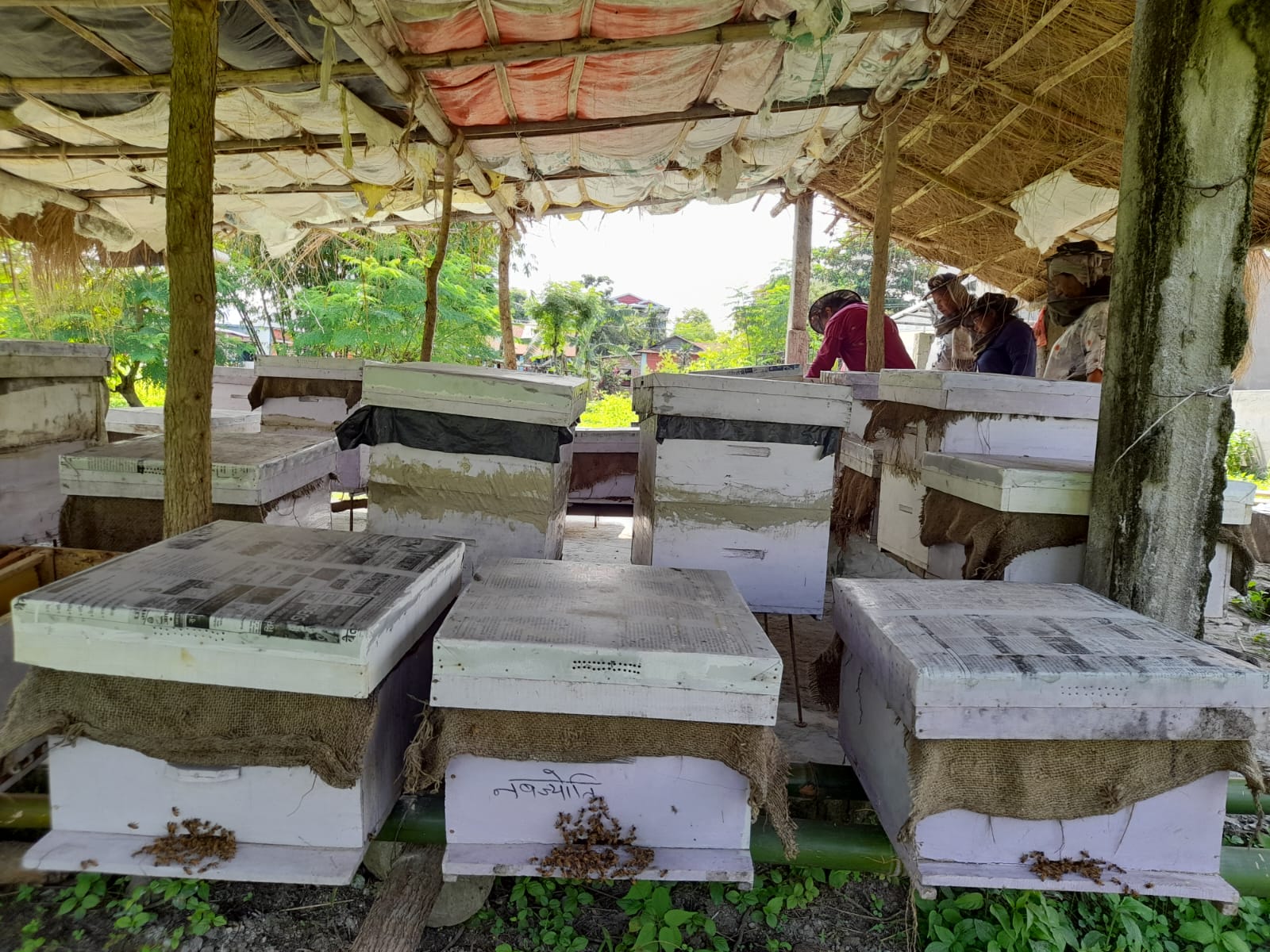
For safety, gloves, mesh face coverings, boots, and other equipment are used. Smoke is also used when necessary. If stung by many bees, hospital treatment such as medication or injection may be required. However, for stings from 5-10 bees, home remedies are usually sufficient, says Rita. According to her, during emergencies like pesticide exposure or fire, bees must be relocated to a safe place. For example, when farmers use pesticides on crops visited by bees, the hives must be closed for at least 24 hours.
Additionally, medicines must be used to protect against ants, wax moths, wasps and mites. If the hive’s structure becomes weak, the chance of attacks increases, so it must be strengthened. For safety, the hives are kept some distance away from villages or schools.
In Search of market, Preparing for registration
Currently, the business is not registered, as Rita explains. She explains, “We have not yet reached a fully mature stage. Bees are sensitive creatures, and their lives are deeply connected with weather, sunlight, and plants.” According to her, because the number of bees is still relatively low, there is no continuity in production. “If we register the business and later face bee mortality or halted production, business continuity would be at risk. Just registering a firm does not ensure a sustainable business.”
Rita adds, “Another aspect is that our honey production is currently limited to local sales through networks, recommendations, and personal connections. Legally, registration is required for distribution, but in terms of our current income, not being registered has not made a significant difference. Once production becomes consistent and the market is stable and expanded, we plan to initiate the registration process. We are aware that legal recognition (registration) is necessary, and we are building the foundation to move in that direction.”
Encouraging others interested in beekeeping, Rita says, “On average, it currently costs only about fifteen thousand rupees to start a beehive. When resources are sufficient, the additional costs are minimal. Special care is mainly required during the off-season, when sugar syrup or sweetened water must be fed to the bees.”
On the other hand, Rita shares that honey production has immense potential. During resourceful times, a single hive can produce 10 to 12 kg of honey per extraction, and up to three extractions can be done in a month. In this way, a single hive has the capacity to produce over 35 kg of honey in a month. However, some additional expenses are inevitable. Since the bees must be moved to flower-abundant areas, there are transportation costs. Also, when placing hives on someone else’s farmland, rent must sometimes be paid based on verbal agreements.

Rita says, “Beekeeping can be highly profitable for those who want to start a business without major investment. But for success, dedication, consistent care, and access to the market are essential.”
So far, Rita has only been producing honey and has not started making other products. However, she is filled with enthusiasm. “The greatest lesson from bees is hard work and diligence. Those tiny creatures work tirelessly and in unity. If humans could also have such unity and effort, how wonderful that would be,” she says emotionally.
Clarifying her future plans, Rita says, “If the produced honey begins to sell well, this business can become permanent. One could live a decent life in the village itself without having to go abroad.” According to Rita, the current problem is lack of market access. Sales are mostly limited to local and familiar customers. Although the local government has provided training and investment for beekeeping, there are still problems on the sales side. Rita says that if the local government could also guide them in market identification and management, the business could grow even further. She has realized that, along with knowledge of beekeeping, understanding how to manage a business is also essential.
The journey of beekeeping undertaken by Rita Tamang and her group stands as an excellent example not only of a business initiative but also of self-reliance, dedication, and the effective utilization of local resources.




